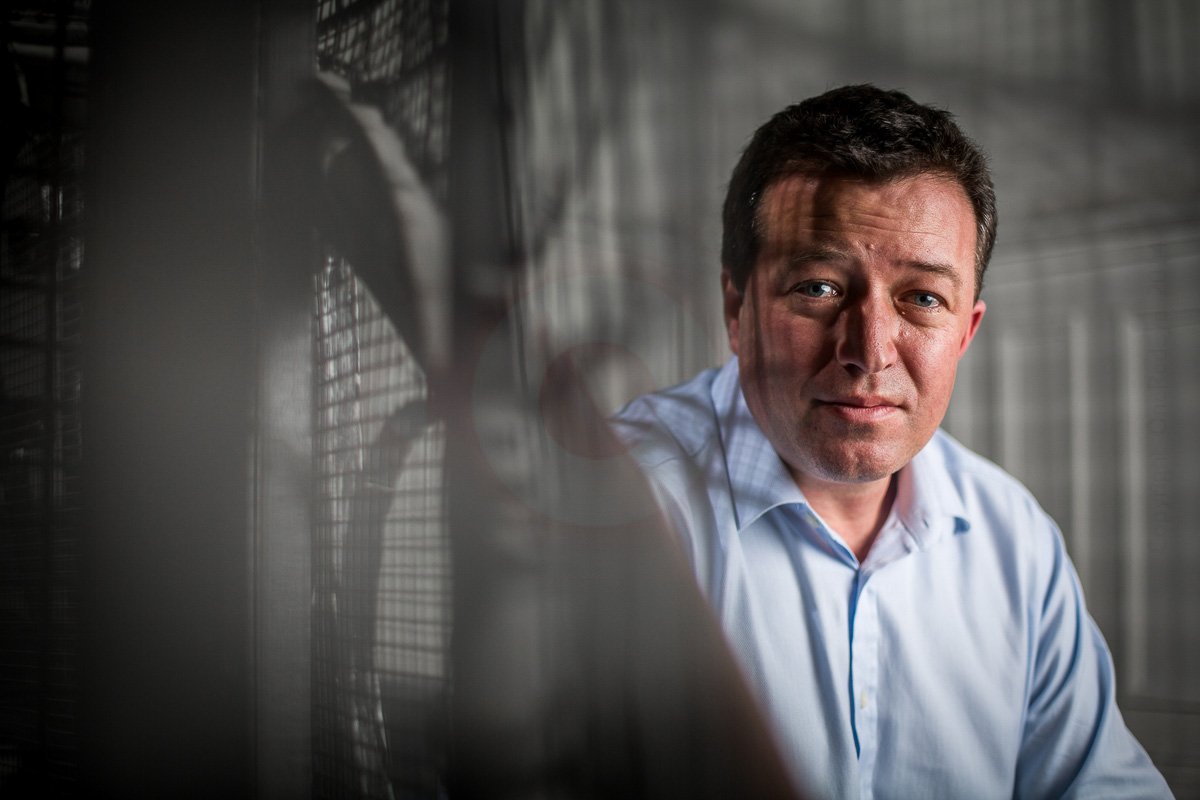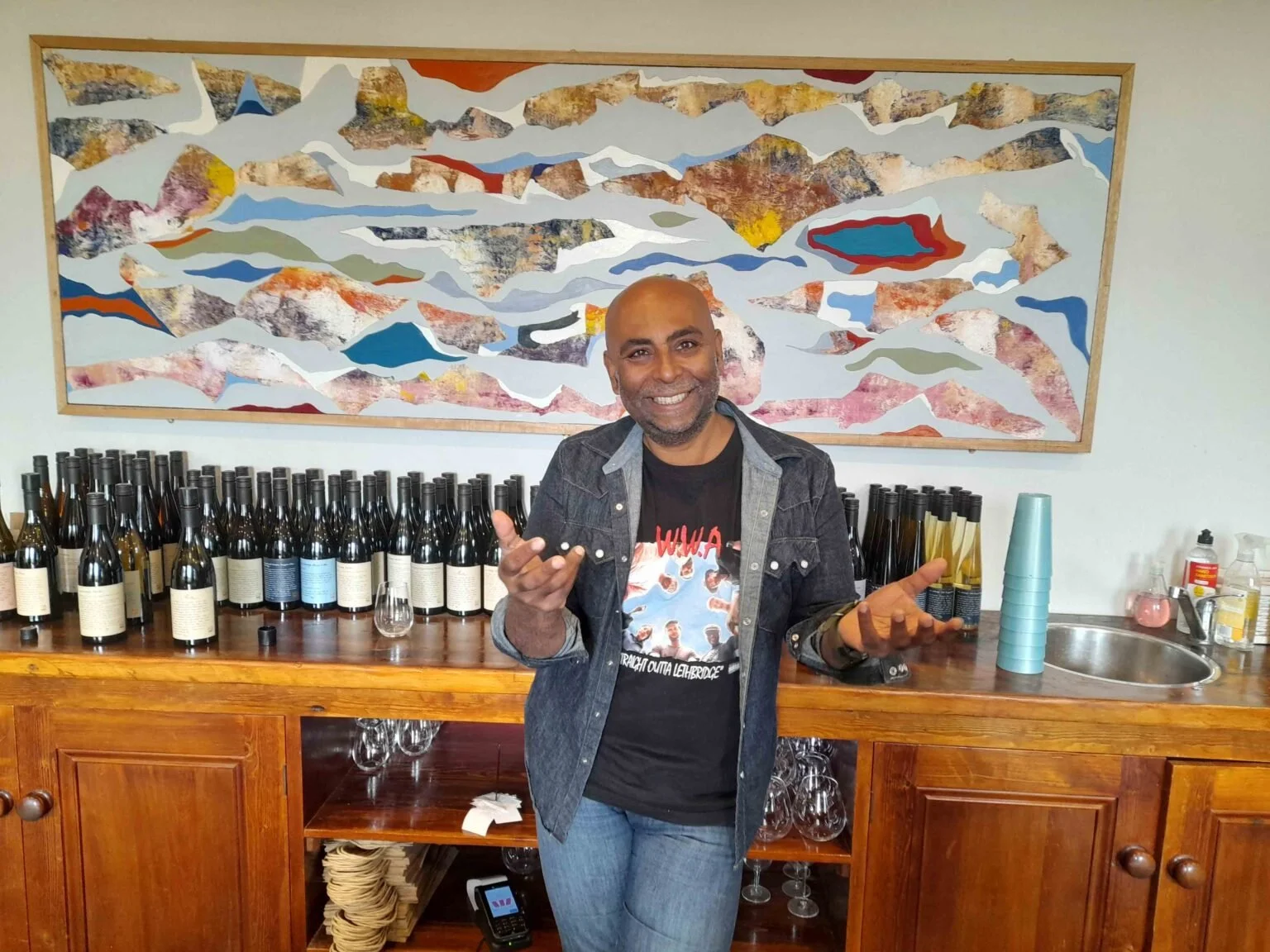Louis-Fabrice celebrated at first class Louis Latour Agencies tasting
The annual portfolio tasting for Louis Latour Agencies last week was an impressive affair, particularly given that it was the first since the tragic passing of Louis-Fabrice Latour last September. With his brother Florent Latour attending as well as MD Will Oatley, Geoffrey Dean got the lowdown on the company’s succession plans and the priorities for the coming year. New agencies Château Sainte Roseline from Côtes de Provence and Champagne’s Cobalte Vodka were unveiled along with all the new vintages and cuvées from the company’s tidy stable of international, family-owned estates. Dean also highlights nine wines (and a brandy) that caught his eye.
All of the old Louis Latour Agencies’ favourites from around the world were available for tasting, as well as two new additions,” writes Dean.
Sadly missed: Louis-Fabrice Latour, London, November 2019
If there was sadness for many who attended the Louis Latour Agencies annual tasting in London following the tragic death of Louis-Fabrice Latour last September at the age of 58, they could at least console themselves in the truly outstanding quality of wines – and spirits – that were on show. His brother, Florent, who succeeded him as chairman of Maison Louis-Latour, was present, as was Will Oatley, the managing-director of the importer, who paid tribute while trying to look ahead.
“Louis-Fabrice was my boss for nine years, while Richard Nunn, my co-director, had known him since they were in their twenties,” Oatley said. “It is very sad, and a big challenge for Florent to keep coming over from his home in Washington. He’s been over every other week or so, but there will have to be some sort of a compromise.”
“Florent has kindly come in for stewardship for the next five years until Eléonore takes over from him. She is Louis-Fabrice’s oldest child and is just finishing her law degree, and will come into the business for a fairly intensive induction programme for five years before hopefully taking over by the age of 30. She will be the first female CEO at Louis Latour in 226 years as they have always gone for the oldest son. Finally, the women will get the recognition they deserve as the 12th generation.”
The focus for 2023
Will Oatley
What were the importer’s priorities for this year, I asked?
“Definitely more fine wine,” Oatley mused. “Availability is the critical issue we face because of the 2021 vintage’s lean yield, but there is undoubtedly still demand for fine wine in the upper echelons of wealth in this country. The Burgundy shortfall is a big issue, but there seems to be a crazy scenario where however high the price goes, people don’t care: there’s still demand for top-end Burgundy.”
“We had a bountiful ’22 vintage but we probably need another bountiful ’23 for things to start catching up with the deficit. There’s not as much stock of older vintages as we’d like. We’ve still got good quantities of our main grands crus – Corton-Charlemagne & Château Corton Grancey – but demand globally has been insane. So we’re just trying to keep up with it, but in general I think the business is very robust.”
Bruno Pepin, export director for Maison Louis Latour, revealed just how low the yield had been in the frost-hit 2021 vintage.
“In Corton-Charlemagne, we own 10.5 hectares, which means we would normally produce around 400 hl, but in 2021 it was just 60 hl, or 16% of a normal year,” he said. “For the reds, we produced around 20%. Vineyards never used to get exposed to frost before the month of May, but with warmer winters, the vines start growing earlier and now get exposed from late March to early April. Fans are not enough – we put candles in or spray water or use electrical cables but those are very expensive.”
Pepin revealed that the company’s premium 2022 Burgundies would not be released till the second half of the year. “But the entry level wines are likely to be released six months before the normal date – in March or April as the market is asking for it,” he added. “The ’22 vintage is going to be absorbed extremely quickly, so we are hoping that ’23 will be as good in quality and quantity as ’22, because if not, there’s going to be a problem again.”
Given the shortage of stock, consumers might like to consider Simonnet-Febvre’s well-priced Irancy Paradis 2020 from Grand Auxerrois. Supple tannins and generous fruit were its hallmarks. The company’s managing director, Paul Espitalié, declared: “We’re trying to push the Irancy here as we have plenty of stock, although not to supermarkets.”
Other Pinot Noirs that showed well were Pyramid Valley’s North Canterbury 2019 from the South Island of New Zealand and Wakefield Wines’ Estate 2021, with grapes being sourced from various regions of South Australia. Wakefield’s top-of-the-range St. Andrews Cabernet Sauvignon 2018 label underlined how good the varietal can be in the Clare Valley. Fine, suave tannins and glorious fruit that saw a long hang-time were features.
Oatley spoke of his determination to balance the portfolio and to get an equilibrium between Old and New World. This he has achieved nicely. The former is powerfully represented by Louis Latour’s own Burgundies, Simonnet-Febvre’s Chablis holdings, Vidal-Fleurie’s Rhône labels, Domaine Michel Redde in the Loire, Gosset in Champagne and Castello Banfi in Piemonte and Tuscany.
New World devotees, meanwhile, can choose between not just Wakefield and Pyramid Valley but fellow top Australasian wineries in McHenry Hohnen (Margaret River) and Smith & Sheth (Hawkes Bay). Americas representation comes from Viu Manent in Chile’s Colchagua Valley, while Morgenhof flies the flag for South Africa. It is an impressive range of styles and price-points from around the world that should satisfy any wine-drinker.
Provence Rosé and vodka from Champagne: new additions
Iconic Nectars’ Victoria Bourguignon: vodka made from Champagne grapes
All of the old Louis Latour Agencies’ favourites from around the world were available for tasting, as well as two new additions to the stable: Château Sainte Roseline, Côtes de Provence Cru Classé and Cobalte Vodka, Ay-Champagne.
“Provence Rosé has been having an exponential increase in the last five years, especially in the UK, and shows no sign of slowing down, so we thought we’d ride the crest of a wave,” Oatley reasoned. “Spirits is another priority for us. We took on Frapin in 2015, and it has sold incredibly well since then. We thought there was an opportunity for an additional spirit, namely Cobalte vodka.”
Coming in a blingy, cylindrical-shaped bottle, this super-premium vodka enjoys the unusual distinction of being made from Chardonnay, Pinot Noir and Pinot Meunier grapes from the Montagne de Reims. Fusing minerality, roundness of fruit and freshness, it was distilled with its lees five times, creating an end product of purity and elegance.
Aurélie Bertin: a foothold in the UK for the premium cuvées
Château Sainte Roseline is one of the 18 remaining Cru Classé estates in Provence, and the only one in Les Arcs-sur-Argens, some 35 km from St Tropez. It has three appealing Rosés – a mid-market, a lower-premium and a super-premium as well as a premium white made from Rolle, and a flagship red blend of Cabernet Sauvignon and Syrah. The lower-premium Rosé, labelled ‘Lampe de Meduse’ 2022 comes in a curiously-shaped bottle with a bulbous bottom, and is a blend of seven varietals: Grenache (the main one at 40%), Cinsault, Syrah, Grenache, Mourvèdre, Carignan, Rolle and Tibouren.
A sister estate named Château des Demoiselles lies only seven kilometres away, and produces a trio of good mid-market labels: a red, a white and a Rosé. The sartorially elegant Aurélie Bertin, who owns both, declared her aim is to gain a foothold in the UK. “We currently export 28% of our production, but we would like to develop that and especially the UK market,” she said. “We have exported a little bit here before but not the top cuvées. We are very happy to work with Louis Latour as they know how to sell premium wine.”
Oatley revealed more additions might be made this year. “We’re always looking but it has to fit in with the company’s ethos, being all family-owned and family-run by quality people,” he said. “California has obvious voids to fill – but they’ve got to fulfil the criteria. So yes we’re in the market but it’s a very slow and measured expansion.”
9 wines (and a brandy) that caught the eye
Louis Latour Ardèche Viognier 2021: winemaker Marion Bosquet says she likes to pick early and ensure the ABV never goes above 13.5% for this naturally high-in-alcohol grape. Freshness and attractive fruit mark this well-balanced, seductive Viognier.
Louis Latour Château Corton Grancey Grand Cru 2019: herbal, floral aromas, seductive redcurrant and red cherry notes along with notable freshness and firm tannins are the hallmarks of this graceful Pinot. Wonderful concentration and a very persistent finish.
Vidal-Fleury Vacqueyras 2020: Grenache, Syrah and Mourvèdre make up a blend that is already drinking well. Intensely floral with garriguey, herbal and spicy notes. Marked intensity of flavour with glorious red fruit and approachable tannins.
Côtes de Provence La Chapelle de Sainte Roseline Rosé 2022 (cask sample): 80% Mourvèdre which spent three months in old oak, with Grenache and Rolle making up the balance. A food wine which has freshness, structure and complexity.
Castello Banfi Brunello di Montalcino Poggio alle Mura 2018: no new oak for this classy, full-bodied Brunello with velvety tannins. Glorious red fruit (100% Sangiovese) with great concentration and a very long finish.
McHenry Hohnen Marsanne-Roussanne 2020: fruit for this enticing Margaret River Rhône-style blend came from the biodynamically-farmed Hazel’s Vineyard. Winemaker Jacopo Dalli Cani eschews technology in the vinification process, and has made a really expressive premium wine.
Smith & Sheth Cru Heretaunga Albariño, Hawkes Bay, NZ 2021: Steve Smith MW and Brian Sheth, a wealthy wildlife conservationist, got together to source fruit from exceptional sites – this being loam over gravel soils. Partial malolactic fermentation; bright lime and ripe peach fruit.
Viu Manent Loma Blanca Single Vineyard Carmenère 2019: high quality Chilean Carmenère from a Colchagua Valley estate celebrating its 88th year after being founded by Catalan emigrés, the Viu family. Medium-bodied with ripe red fruit and dried herb, spicy notes.
Gosset Grande Reserve NV: Five years on the lees for this top-class Champagne with elegance, purity and precision. Pinot Noir (45%), Chardonnay (45%) & Pinot Meunier (10%) from premier and grand cru vineyards surrounding Ay and Epernay, with 8g/l dosage.
Cognac Frapin Château Fontpinot XO: a magnificent rich, complex brandy to celebrate the 100th anniversary of production. Still in original family ownership, the company’s head, Jean-Pierre Cointreau, is a direct descendant of the founder. Frapin’s 240 hectares of Ugni Blanc vines that surround Château Fontpinot are all in the Grande Champagne area.






























































